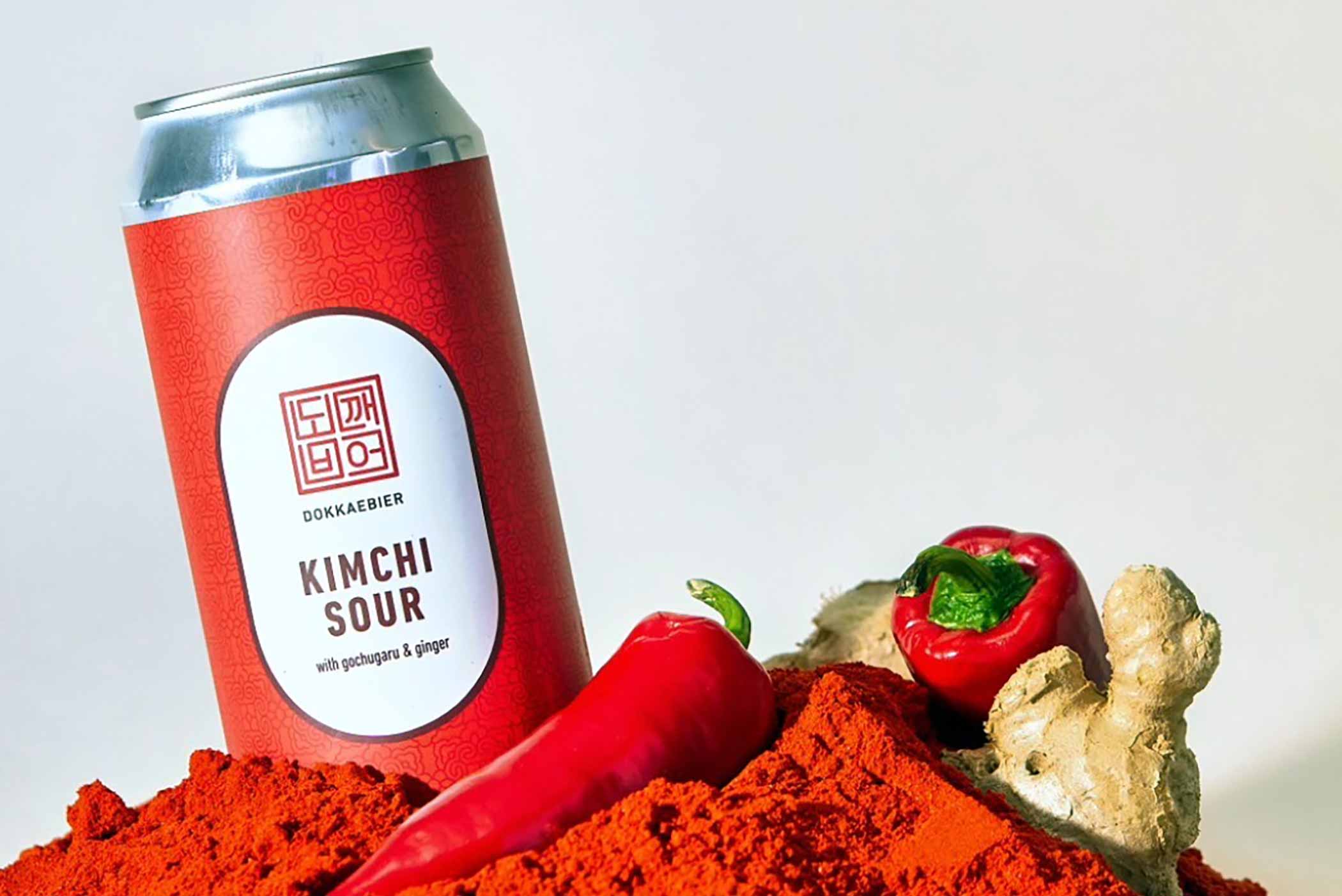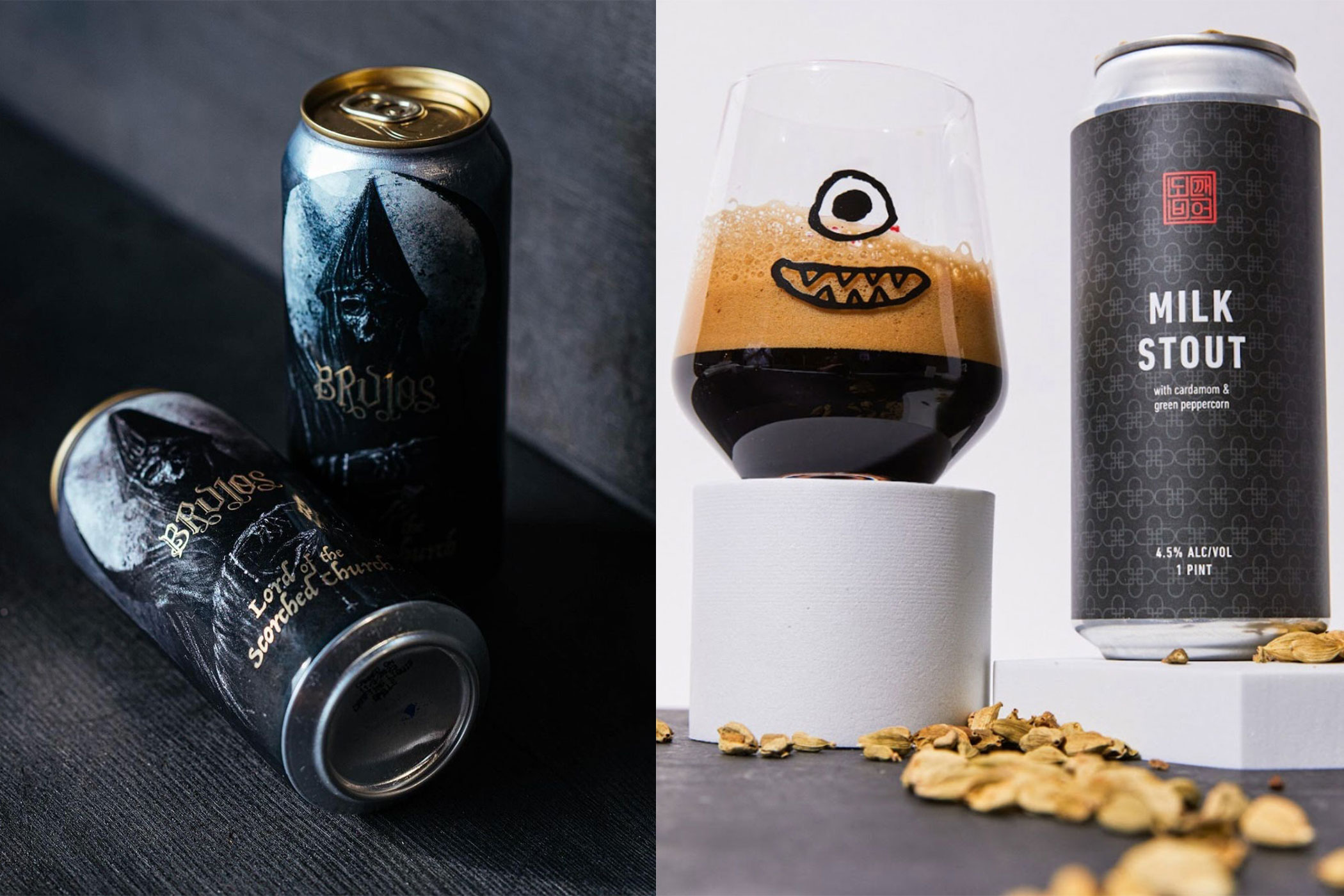Shop
Dokkaebier: Where I’ll Always Remember My First Kimchi Sour
Seoulful brewing.
Looking for More on Our Best New Breweries?
The inconspicuous pail sat bubbling away on a table in the back of the brewery. I wouldn’t have even noticed if someone hadn’t pointed it out to me. If I looked inside, I’d find a homemade kimchi culture from Dokkaebier’s Head Brewer Aaron Wehnak hibernating, waiting for the right moment to awake.
“I think this one’s about two years old,” Dokkaebier Founder Youngwon Lee told me as he showed me around on a Friday afternoon. “We call it Aaron Jr.”
Used to sour the brewery’s best-selling Kimchi Sour, Aaron Jr. has become one of the most essential parts of this Korean-owned brewery. At Dokkaebier—named after the mythical Korean creatures called dokkaebi (도깨비) that hide objects during the daytime but come out at night to play, eat, and drink—nothing is as it seems.
You won’t just find a typical blonde ale; you’ll find a blonde ale with yuzu (yuza in Korean).
You won’t just find a pilsner; you’ll find a pilsner with bamboo tea leaves or black tea lychee.
And you won’t just find a witbier; you’ll find a witbier with galangal and lime or with lemongrass.
Of course, you’ll also find that now sought-after Kimchi Sour, a beer unlike any we’ve ever tried.
At Dokkaebier, one of our best new breweries of 2023, every single beer finds inspiration in Korean ingredients, flavors, and traditions.
Much like that two-year-old kimchi culture, Dokkaebier lives and breathes Korean culture, bringing a bit of Lee’s home to craft beer drinkers in the States. All through a glass of beer.
Korea and Everywhere In-Between
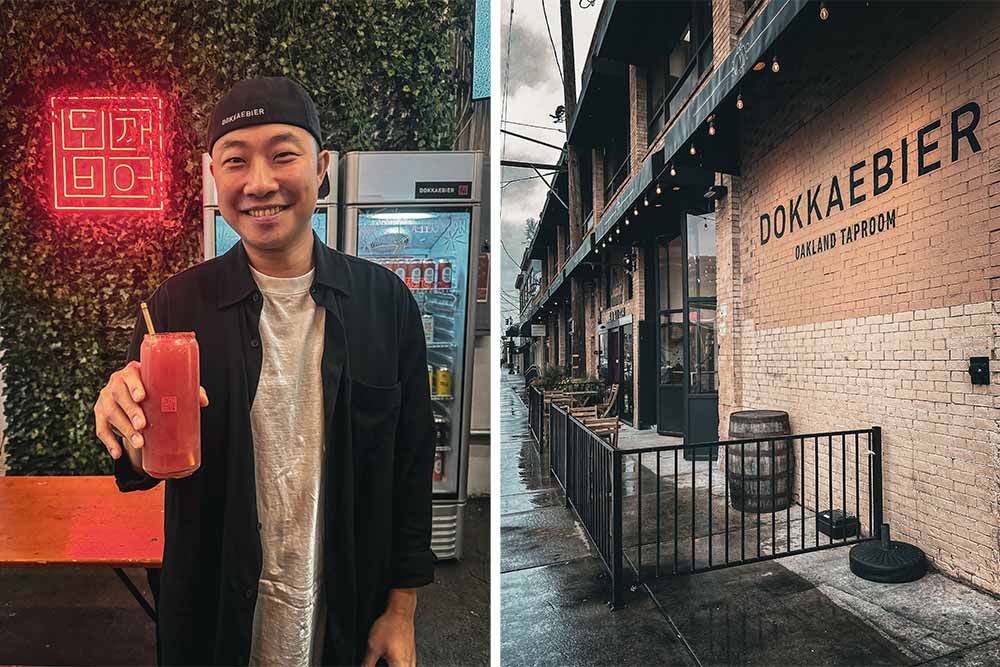
Dokkaebier Founder Youngwon Lee (on the left) and the new brewery taproom in the Jack London neighborhood of Oakland, CA (on the right) | Photography courtesy of Magic Muncie | Hop Culture
Born in Korea, Lee has lived all over the world. His family moved to Guam and New Jersey before he attended college at Cal in Berkeley, CA. Not too far into school, he returned to Korea to care for his sick grandmother.
She passed away after about a month, and “I still had a couple of months to kill,” says Lee, who started working for a wine consulting company part-time. “Either I was legal or about to be legal,” Lee jokes. “It was close enough.”
One semester off quickly turned into two. “And that became eight years,” says Lee, who eventually found his way to beer, working at the Korean-owned brewery The Booth when they opened an outpost in Eureka, California.
“They told me, hey, can you actually go to California; we bought a brewery in Eureka,” recalls Lee. “I said, ‘Where is Eureka?’”
About five hours north of San Francisco, Eureka ended up being a paradise for Lee, who had spent almost a decade living in the heart of Seoul. “It was heaven for me because it was just a lot of nature,” says Lee.
Over the next couple of years at The Booth, Lee started to notice something, especially when attending beer festivals. “I was the only Asian person pouring there,” he says.
Lee saw an opportunity.
When The Booth folded in the U.S. in 2019, he knew he wanted to continue to find ways to bring his culture to American drinkers.
He went all in.
Brewing Even More Asian
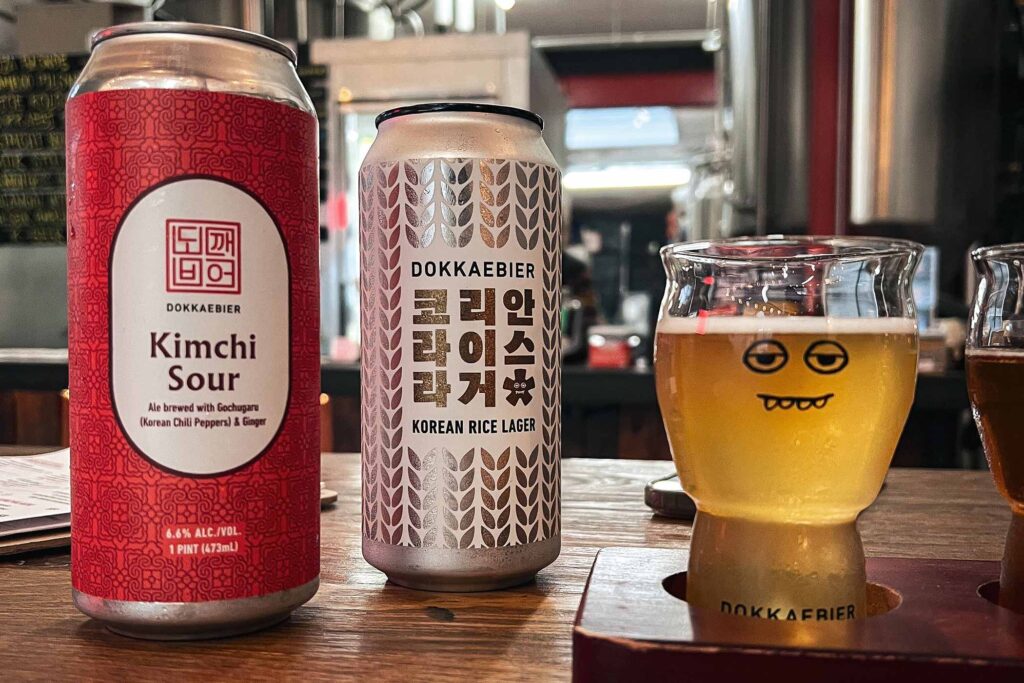
Photography courtesy of Magic Muncie | Hop Culture
With Dokkaebier, Lee didn’t want to hide his identity; he wanted to embrace it. And then some.
The Booth showed Korean culture through labels and branding. But the beer itself colored pretty much within the lines of popular American styles—hazies, IPAs, etc.
“If I’m going to create something new, I’m going to go all out and go be more Asian,” he says as I taste the seasonal Chuseok Porter, Dokkaebier’s riff on a pumpkin beer with pumpkin, ginger, rice, and cinnamon, named after Korean Thanksgiving.
Some wear their hearts on their sleeves. Lee lays it all out in the liquid.
“What I saw as an opportunity back then is now more like a mission,” he tells me. “I’m going to make the industry more diverse. I want to bring more culture to the beer that we make.”
Dokkaebier’s three original beers included a Bamboo Pilsner, a chai-inspired Milk Stout with cardamom and green peppercorn, and an OG Witbier, which stood for omija, an Asian magnolia berry, and gochugaru chili flakes. “It was a tart, refreshing, lifestyle beer,” says Lee.
Launching Dokkaebier as a pop-up brewery on February 7, 2020, Lee immediately hit hurdles. Thanks, of course, to a global pandemic.
Undeterred, Lee started hand-delivering his beer across the Bay Area.
“I used to literally drive 200-300 miles a day [delivering] door to door,” he smiles.
On delivery days, Lee loaded up his Prius at a warehouse in Oakland before hitting up San Francisco, San Mateo, San Jose, Fremont, San Ramon, and Walnut Creek, making a slow loop around the Bay Area.
“I think I fit up to forty-five to fifty cases of beer [in the Prius],” he said. “I became a lowrider… It was heavy!” Lee admits he enjoyed driving around the hills of San Francisco, weighed down with his beer. “Anytime you took a risk of going a little fast and everything flipping!”
Over the next three years, Lee (gloved up and mask on) delivered what he called his “experimental” beers.
“Every time I went to someone’s house, I’d ring the bell, step back, and be like, ‘hey, here’s your beer delivery,” Lee says.
Thankfully, Lee and the Prius survived, and so did Dokkaebier.
From the Back of a Prius to a Permanent Home
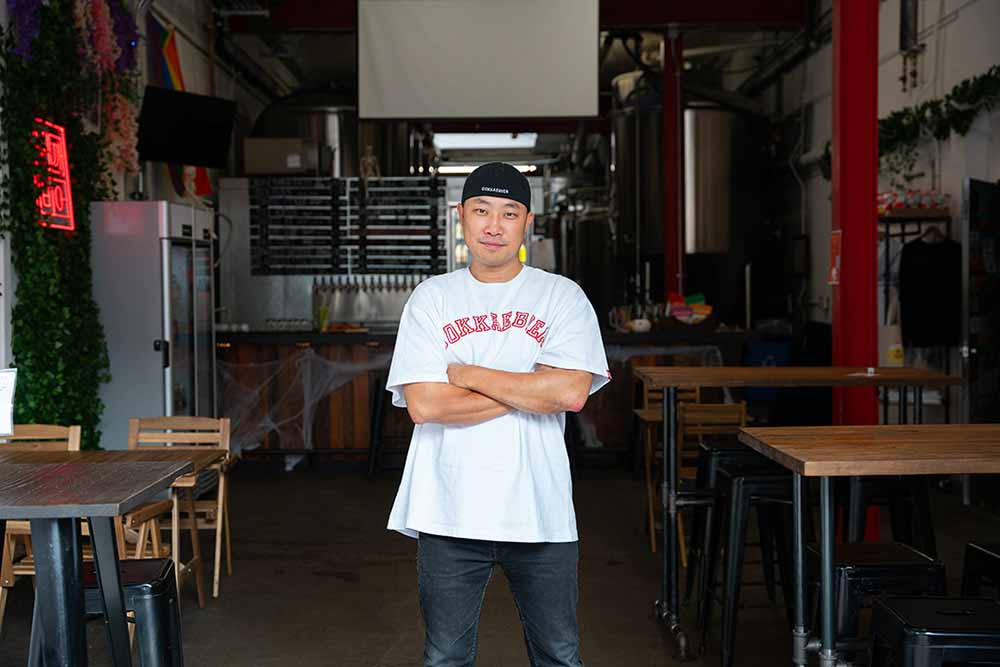
Photography courtesy of Florence Middleton
Last year, Lee found Dokkaebier a brick-and-mortar location, taking over the old Federation Brewing taproom in the Jack London neighborhood of Oakland.
Lee, who lives only a few blocks from the brewery, doesn’t need to load up the Prius anymore. Now, people come to him.
Many remember Lee delivering to them. “I don’t know them because I was wearing a mask, and then they were wearing a mask. So I was like, where did you live? And I look up a street, and I look at a Google map, like, oh, I know this house! I’ve been there a few times!” he says. “I’ve been to like every single street in the whole entire Bay Area!”
Par for the course for the once-itinerant brewery owner. Because Lee has always drawn his own map.
He has to if he wants to keep driving Dokkaebier into uncharted territory. Where else can you try a pilsner made with bamboo tea leaves, milk stout with green peppercorns, or witbier with gochugaru?
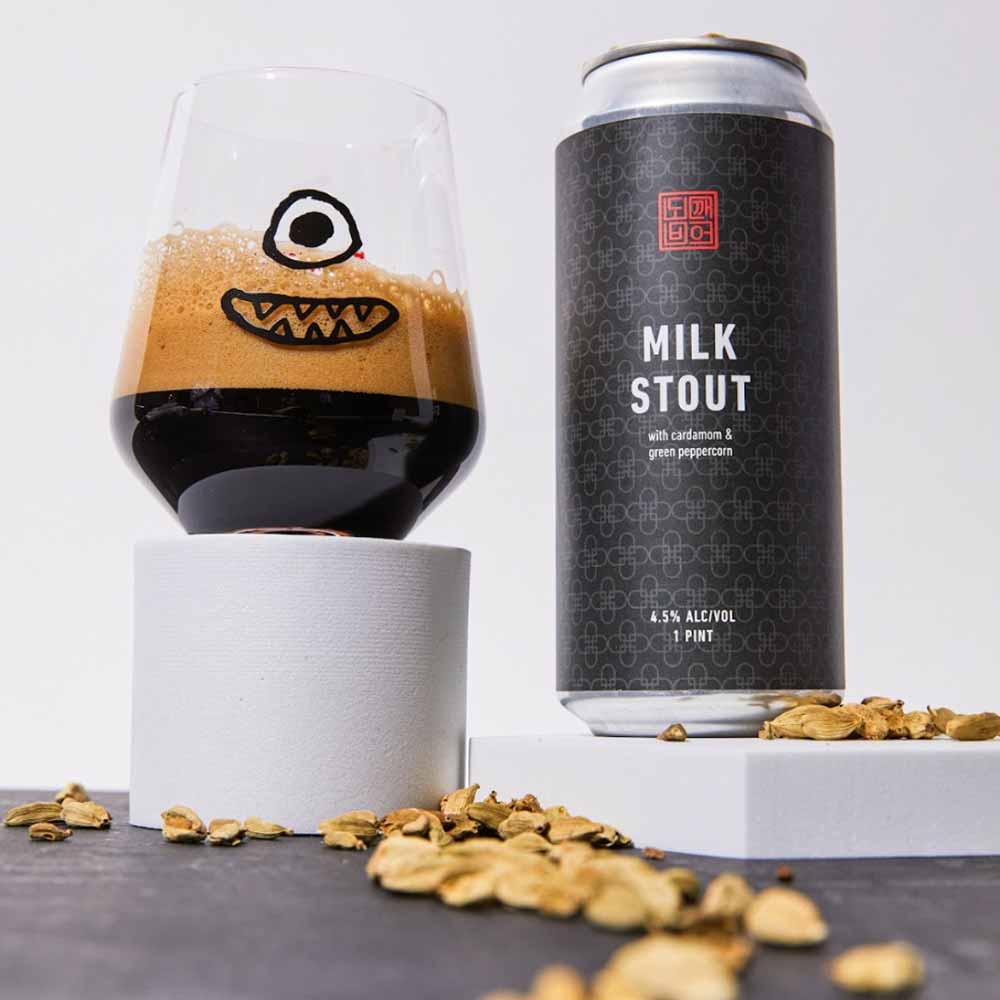
Photography courtesy of @dokkaebier
And while Dokkaebier now has some staples you’ll always find on—Yuza Blonde, Bamboo Pilsner, Rich Kolsch, Dokkaebi IPA, Milk Stout, and Lemongrass Witbier, to name a few—it’s Lee’s line of experimental beers that drive the brewery forward.
The three Lee started with have morphed into thirty-five.
Each beer gets the same label, with only the ingredients and names switching up. Lee says they’ll test it with the market and launch it as an official Dokkaebier beer if people like it enough.
Like the Kimchi Sour—experimental batch number 17.
That Kimchi Sour, Though
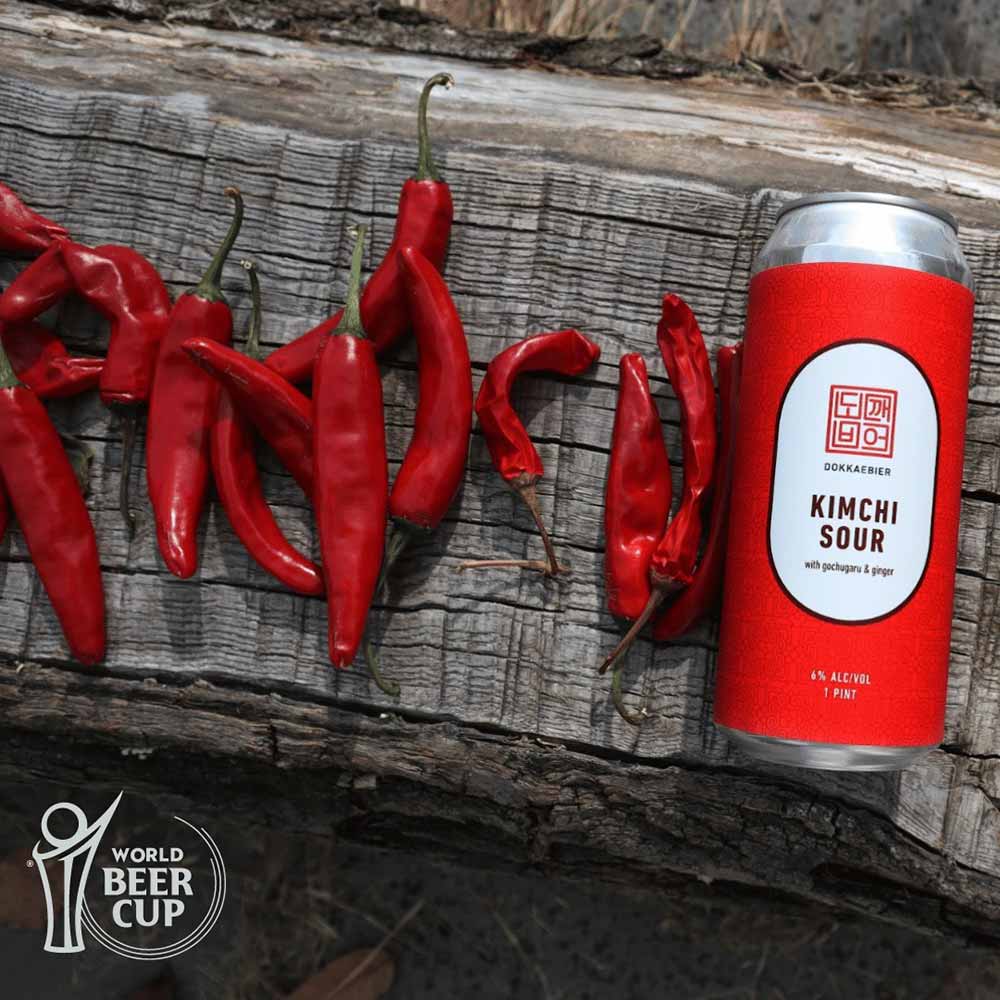
Photography courtesy of @dokkaebier
Made with ginger, gochugaru peppers, and a lactic culture from two-year-old homemade kimchi, the Kimchi Sour mimics the funky flavors of the traditional Korean fermented cabbage.
To infuse character, Dokkaebier Brewer Jake Dworkin passes the wort through a steeping bag of gochugaru peppers before kettle souring with that bespoke kimchi culture, which sits in the kettle for two days. “We do it on Fridays, so we let it sit over the weekend [souring] before we bring it to a boil and then brew like normal,” Dworkin told me as I watched him lightly stir a giant vat.
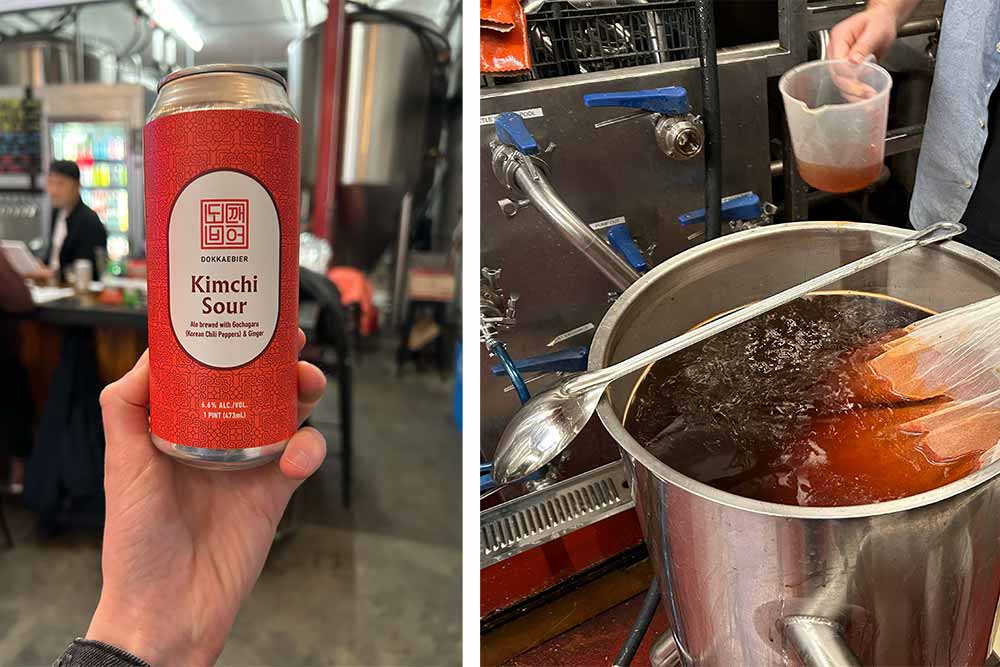
Photography courtesy of Grace Weitz | Hop Culture
The result?
A bold beer unlike any we’ve ever tasted. That is precisely what Lee wants, admitting he was initially afraid to call it a Kimchi Sour because he feared people wouldn’t understand the key ingredients.
“But we were like, you know what? If people don’t know, we’ll use this opportunity to teach them, so let’s just get bold and go for it,” says Lee, who now cites Kimchi Sour as Dokkaebier’s best-selling beer.
The flavors ping pong off your tongue: first, a hit of almost umami from the sour lacto culture, followed by a pleasant, savory tingle from the ginger and gochugaru peppers. Not too sour, this beer stays crushable as Lee intended. “If it hurts you, you can’t drink the whole thing,” says Lee. “So I want it to still be crushable.”
The beer struck a harmonious chord. Even winning a Platinum Medal at the 2022 Annual Brewski Awards and a silver at the World Beer Cup last year.
Lee shares a story of taking the beer to a festival in LA and returning a year later. “People were like, are you the kimchi beer dude!?” Lee says enthusiastically. “Everyone just remembered. [That beer] has such an impact as a flavor, a brand, and a name because there’s no such thing like it. Every single person remembers [it].”
And it’s not the only beer you’ll remember.
Not Your Mother’s Blonde Ale, Witbier, or Pilsner
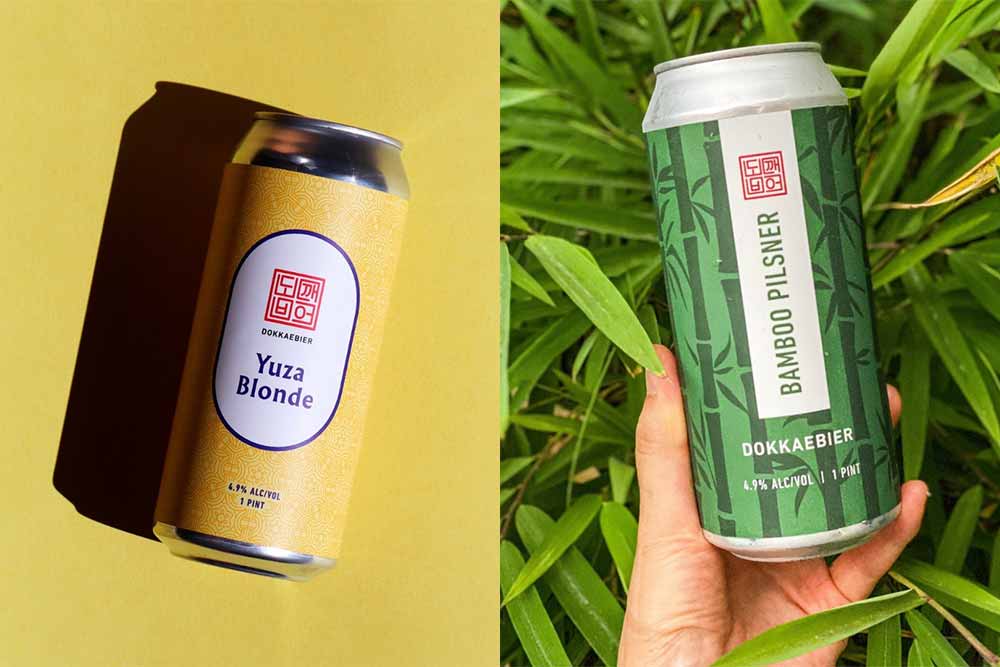
Photography courtesy of @dokkaebier
Today, when you walk into Dokkaebier’s taproom, it’ll take you a minute to read through all the beers written on the chalkboard behind the bar.
You’ll see words like galangal, lemongrass, yuza, bamboo.
Lee’s ceaseless creativity pops up as often as those playfully pesky dokkaebis.
Each beer he invents comes with a sense of whimsy and a spirit of experimentation. But also an opportunity to educate.
Dokkaebier’s second best-seller, the Yuza Blonde, includes yuzu (yuza in Korean), an Asian citrus “between a lemon and orange,” according to Lee. “It will still be very citrusy and fruity, so we made a blonde with that.” That beer also picked up a Platinum Medal at the 2022 Brewski Awards.
When we stopped by, Lee had a Dragon Fruit Blonde in the fermenter, brewed to celebrate the Lunar New Year, which is the Year of the Dragon in 2024.
Two witbiers showcase different Southeast Asian ingredients. The Galangal Witbier includes lime and galangal, which is “similar to ginger but has a sharper bite,” says Lee.
While another version uses lemongrass, which Lee says can be an acquired taste.
Lee says he finds inspiration everywhere around him. “I go to Berkeley Bowl; I go to every single aisle and try out different flavors, ingredients,” he said. “Anything that I interact [with] and consume is my daily inspiration.”
On our visit, one of the new experimental beers included a Black Tea Lychee Pilsner. Lee often uses a crisp, clean, neutral pilsner base to showcase ingredients. “We’ve done a pilsner with a lot of black teas and different teas,” says Lee.
For the brewery’s latest take, Lee found a lychee black tea. “They didn’t use lychee in there, but they roast the black tea with lychee, so the tea extracts all the aromatics and flavors of the lychee,” says Lee as he passed around a huge silver bag stuffed with the black dried leaves for us to smell. “It will start with lychee, and then it will be, like, malty, still like beer. And then you will finish it with sort of a black tea kind of tannin and then flavors.”
It took me a while to put my finger on the smell of the tea leaves until it clicked: an ice cream counter—predominantly vanilla.
You’ll find a similar idea with one of the brewery’s OG beers—the Bamboo Pilsner—which uses bamboo tea leaves.
Or the Calamansi Lime Lager featuring the Filipino lime and jasmine tea.
And an upcoming wheat beer collab with the Black-owned Hella Coastal called Soul to Seoul will have watermelon and ginger.
At Dokkaebier, every beer you try will bring a flavor you probably haven’t seen in a beer before.
And while that can be a scary proposition for a Korean owner trying to break into a predominantly white-dominated market of drinkers, Lee says there’s no better time than now for a place like Dokkaebier.
No Better Time Than Now
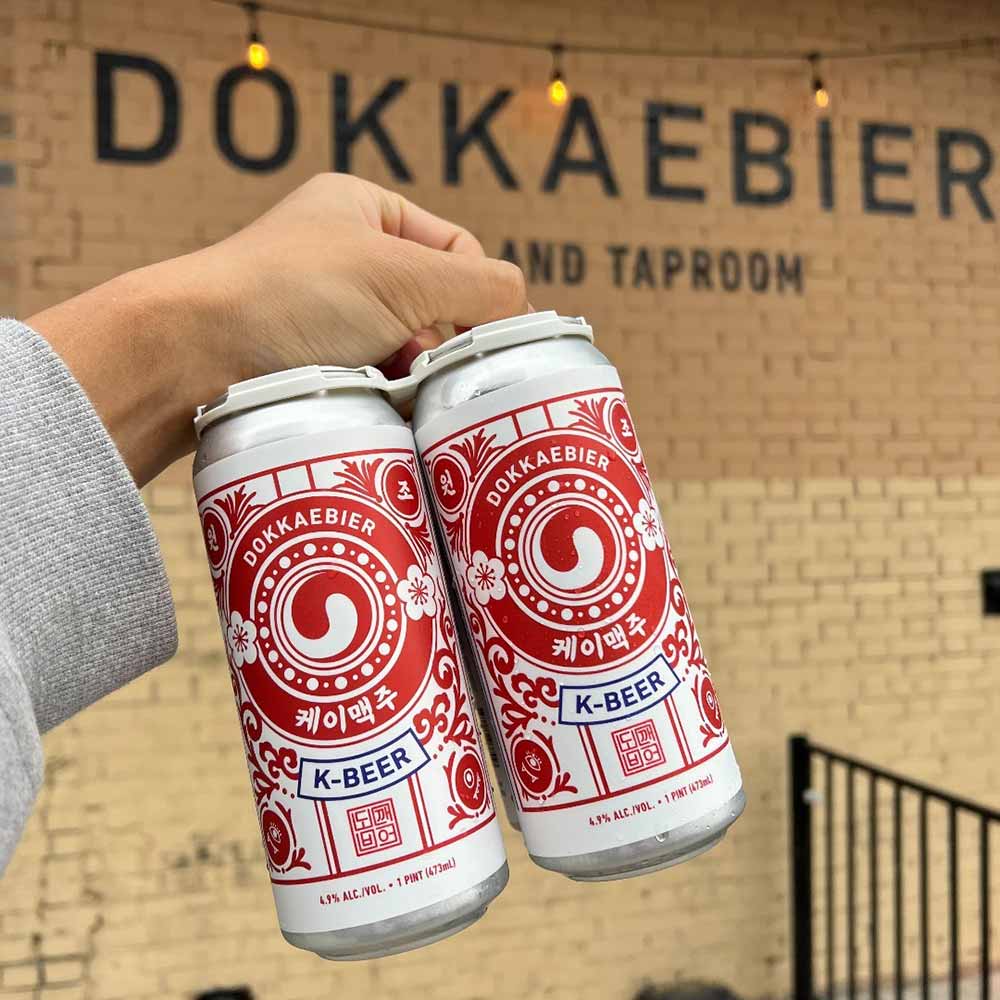
Photography courtesy of @dokkaebier
In the U.S., Korean culture is having a moment. People drop names like BTS and BLACKPINK as frequently as Justin Bieber and T-Swift. On shelves, you’ll find kimchi-flavored everything. Going to K-town for karaoke is so soigne. And even Trader Joe’s meatless Bulgogi went viral.
“Growing up, you would go to a Korean restaurant and only find Korean immigrants,” says Lee. “Now you go to a Korean barbecue and don’t really see a Korean person.”
You can argue both ways whether this is an advantage or an appropriation. Lee likes to believe this is a boon. “Now it’s more cool to be Korean!” he shares.
A nod to which Lee’s given in one of Dokkaebier’s new mainstays—K-Beer.
“K-Drama, K-Pop, K-Music. … I wanted to bring a beer called K-Beer with whatever ‘K-culture’ phenomenon we’re having,” says Lee.
First brewed in November of 2023, K-Beer sold out immediately. Lee says they’re now on their second batch.
K-Beer toes a curvy line. Riffing off popular K-culture attracts younger drinkers, but Lee says he consciously chose the base style to attract older Korean drinkers, too.
“I made it more of a light beer style so that any Korean person could easily upgrade their typical mass-produced lagers to something a bit more elevated,” says Lee, who notes that many older drinkers in the Asian community tend to stick to what they know, “old, warm lager from Asia.”
Perhaps with the most emblematic label, K-Beer includes a symbol from the Korean flag along with the national flower of Korea. In Korean, you’ll find the word 원조, meaning OG or original, with each character on the top left “원” and right “조,” respectively.
“I think for a lot of Korean people, they look at it, and it says “original” and then K-Beer, so it brings them more Korean pride,” says Lee. “Even if your parents never drank craft beer, I could sell this to anyone, and they would drink it.”
Perhaps. Like Korean culture in the mainstream, it just so happens that lagers are gaining more and more cultural capital in craft beer.
For Dokkaebier, there is no better time than now.
Dokkaebier Is a Brewery You Won’t Soon Forget
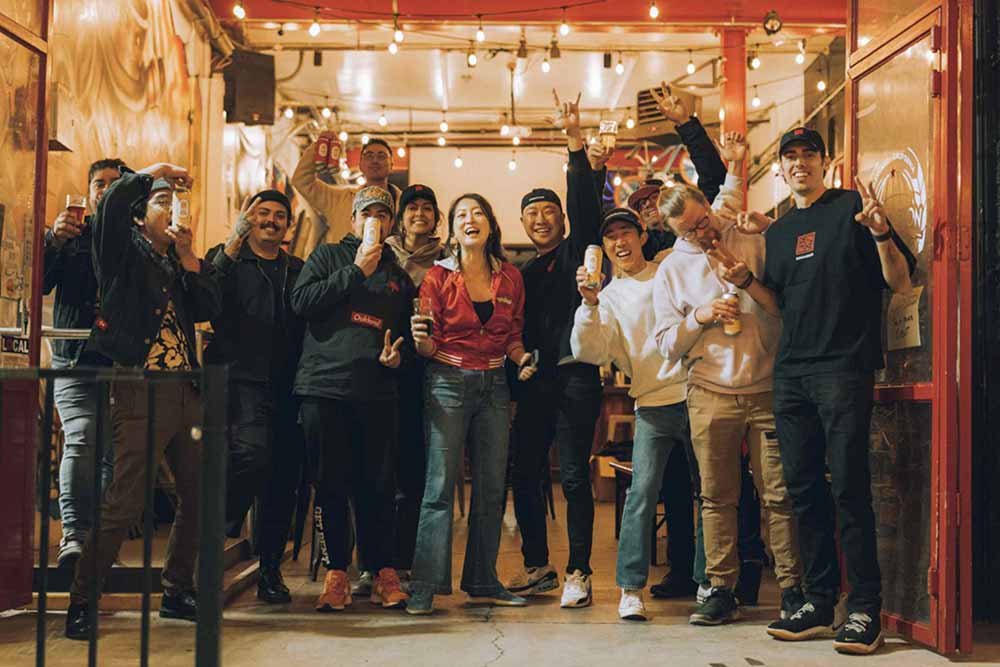
Photography courtesy of @dokkaebier
I’ll never forget where I was when I tried my first Kimchi Sour.
We probably tasted through the entire menu in the three hours we stayed at Dokkaebier. Lee seemed more and more excited about each little taster he brought out to us.
And while the Calamansi Lime lager crushed me with bright, crisp pops, I kept returning to that Kimchi Sour. It just stuck with me. And not only because of the intricately developed flavors.
The dedication to that beer, tending to a culture and keeping it healthy for two years, represents Dokkaebier to a dokkaebi to me.
Perseverance, preservation, and playfulness.
“I wanted to go all out because no one else is doing it over here,” says Lee.
He’s right. There is no place like Dokkaebier.
And as we walked out into the warm night air, I could have sworn I saw a little creature peeking out from behind a barrel, cackling and winking. Then again, it could have just been all the Kimchi Sours.

